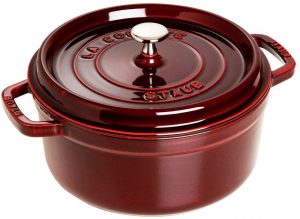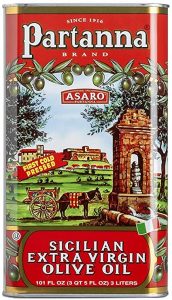The Yard Guide To Cooking & Eating Better

by Henry Gould – March 24th, 2021
It’s been over 12 months since the start of the COVID-19 pandemic, and in that time we’ve gone through several phases of lockdown, reopening, and depending where you live, locking down again. Most restaurants were either closed or only doing takeout for an extended period of time, meaning many people resorted to home cooking projects (anyone still making sourdough???), and were generally eating more meals at home.
From a health and wellness perspective, that’s a good thing! We all love restaurants, but generally speaking they are in the business of making food taste as delicious as possible so that you enjoy your meal, tell your friends, and come back again. Whether that food is healthy to eat on a daily basis is a completely different question.
If your home kitchen isn’t stocked with certain essentials – be it equipment or ingredients – you’re always going to be one step behind. Being able to cook and feed yourself is in my opinion, an essential life skill, and it’s never too late to learn. You’re not always going to have Uber Eats available, and even if you had unlimited cash to burn, wouldn’t that get boring??
Below is a list of several essential items to keep in your kitchen that will help you start cooking better. More expensive doesn’t always mean better, but generally you get what you pay for.
Also, ask the people at the kitchen stores what they recommend. They’re usually thrilled to help, and can steer you in the right direction of stuff that’s on sale or a better bargain.
Good quality pot with a lid

A big heavy pot that you can sear, stew, braise and put in the oven is essential for any kitchen. Lots of people swear by cast iron, but they take time to season and maintain so that food doesn’t stick. If that sounds like it requires too much cognitive input, go for something that is enamel coated as it will be a little more forgiving.
Brands like Lodge, Le Creuset and Staub are all great options, worth the money, and if you treat them well they will last a lifetime.
Sea salt

If you read the recipes on this blog, I only ever recommend sea salt. There’s really no other option for cooking, and no reason why it shouldn’t be the only thing on your counter. Most grocery stores have 1kg boxes of sea salt from Italy going for $3. Use this for general purpose seasoning of soup, stews, meat, pasta boiling water (…as salty as the sea!) or anything else. Iodized salt is too salty, tastes of chemicals, and will almost certainly ruin whatever you’re cooking.
If you fancy yourself a bit of a chef, Maldon sea salt from England is a favorite of professional kitchens the world over. There’s also a great product from Vancouver Island that’s very similar, large flakey crystals that are perfect for finishing dishes.
Extra Virgin Olive Oil

A lot of people have weird misconceptions about extra virgin olive oil. Let’s clear some of them up!
“Will it burn?”
Not necessarily! EVOO burns somewhere between 375-400F, so unless you left your pan on high for 10 minutes, you’ll be OK.
If you’re searing meat or vegetables in EVOO, have all your ingredients ready to go so that when you add the oil to the hot pan you can get them in quickly.
Worst comes to worst, you burn the oil. Dump it out, clean the pan and start again. No big deal.
“Is it bitter?”
Sometimes! Depending on the quality of the olive oil, it can have a bitter taste, but that depends on the origin of the olives, acidity, many other things. Some people like that peppery flavor and prefer it, so it’s just a matter of finding one that you like.
“Can I only use it for savory dishes?”
Depends who you ask! Many Mediterranean and Middle Eastern countries have long traditions of cooking desserts with olive oil. Because it’s a liquid at room temperature it doesn’t typically have the “puff” effect of butter or lard, but can often be used in cakes and other sweets.
“Is it good for you?”
Ask any nutritionist, dietician or doctor and they will unanimously agree that cooking and eating extra virgin olive oil is one of the best additions to any diet. Not only is it full of Omega-3 fatty acids, antioxidants, as well as being anti-inflammatory, a lot of research suggests that industrial seed oils like canola and sunflower have inflammatory properties (i.e. BAD) so cooking with EVOO should be your go-to lipid of choice.
Try to keep at least two EVOO’s on hand; one for general cooking where the flavor isn’t as important (frying, slow cooking) and a higher quality EVOO that you’ll be using for salad and other raw dishes.
Metal Bowls (multiple sizes)

Having a stack of metal bowls is essential for cooking at home. Whether it’s mixing cake batter, tossing salad, straining sauces, cooling broth or marinating meat, metal bowls are key.
They’re also light and easy to clean, which makes them the thing you’ll use every day, over and over.
Good quality chef’s knife

Knives can be a topic of debate amongst chefs and home cooks. Some like the hard-to-sharpen carbon steel of Japanese knives, whereas other think it’s all for show and a $50 utility knife is all you need. Depending on your budget, it can be both.
Knifewear on Main St in Vancouver is a good place to start. Their selection is amazing, and everyone there knows more about knives than you or I ever will.
Salad Spinner

Seems silly, but I use a salad spinner nearly everyday to wash and dry vegetables and herbs. Often times you buy some lettuce, forget about it in the fridge, and after a few days it’s looking a little droopy. Solution? Throw in your salad spinner with cold water and some ice cubes and leave for an hour. Instant rejuvenation!
If you don’t properly spin dry lettuce and herbs for a salad, the dressing won’t stick and you’ll end up with a soggy wet mess.
An OXO Salad Spinner is your best bet, and it’s $29.99.
Strainer

Again, something you’ll find yourself using every day once you have one. Strain vegetables, pasta, wash rice before cooking, sift flour. Line it with paper towel to stain yogurt for tzatziki or labneh. The strainer really is your best friend.
Vinegar

Acidity in cooking is one of the least appreciated aspects in flavor balance. Samin Nosrat’s popular Netflix show “SALT FAT ACID HEAT” did an amazing job showing why acid is such a crucial component in making food taste better.
Good vinegar is something you can always have on hand that won’t go bad, and allows you to turn pretty much any vegetable into a salad, along with a little salt and olive oil.
Red wine vinegar, white wine vinegar, rice wine vinegar, sherry vinegar… all great.
Plain white vinegar? It has its place, but generally will taste more sour and isn’t as pleasant in salad, so opt for the others instead.
